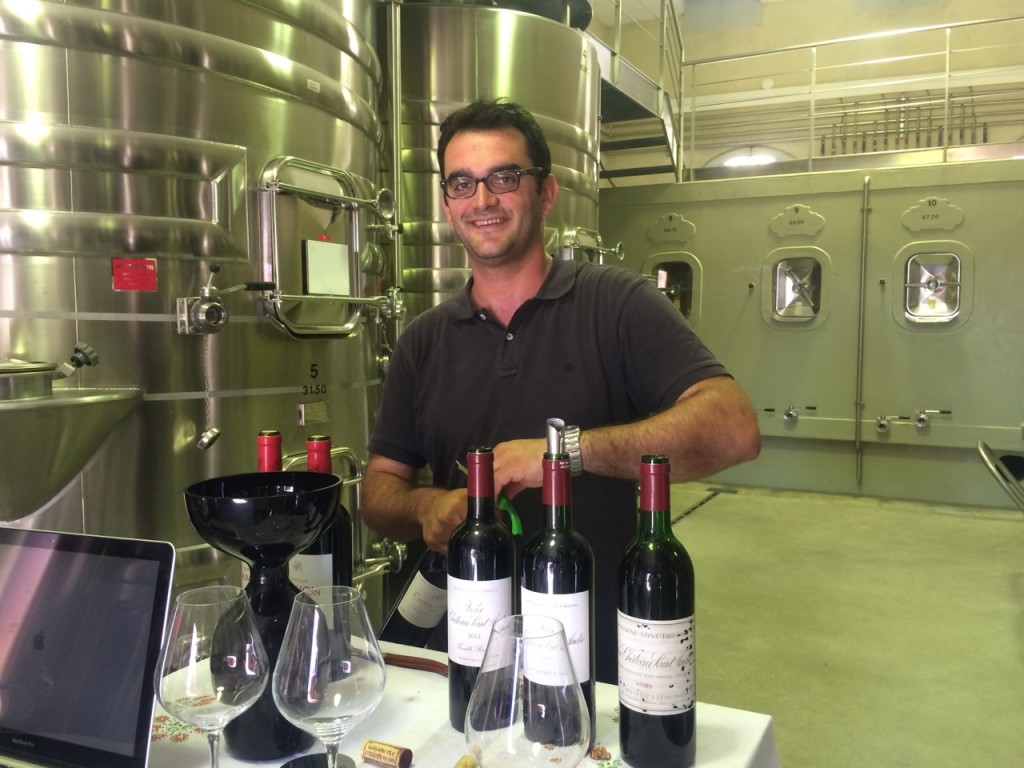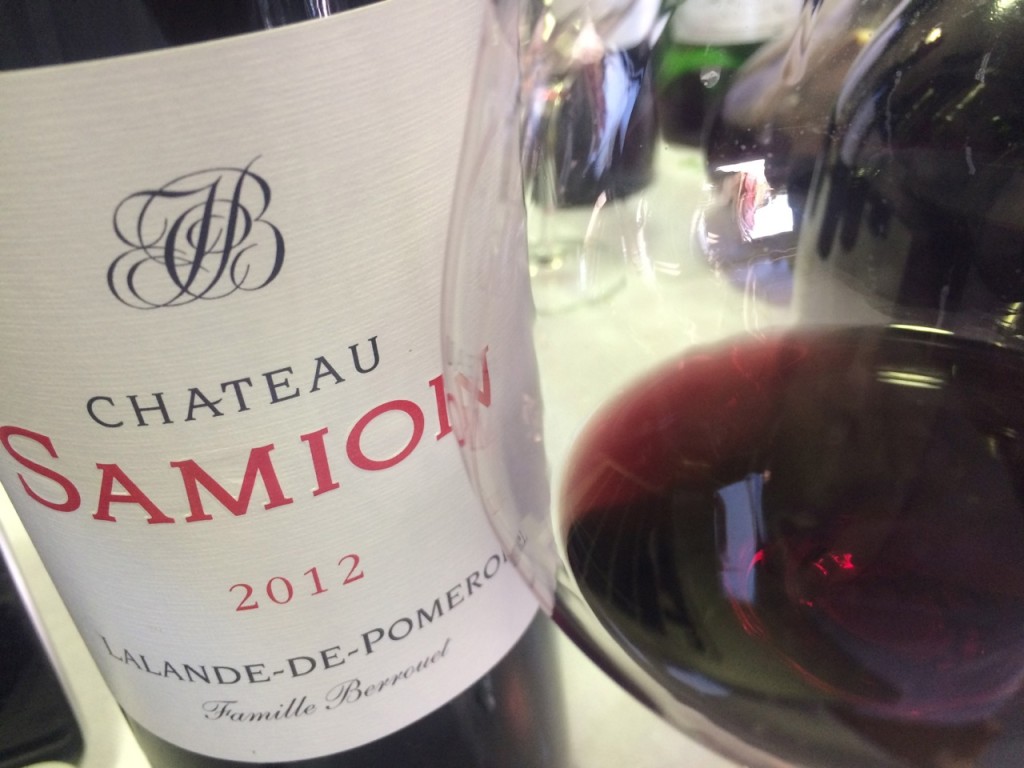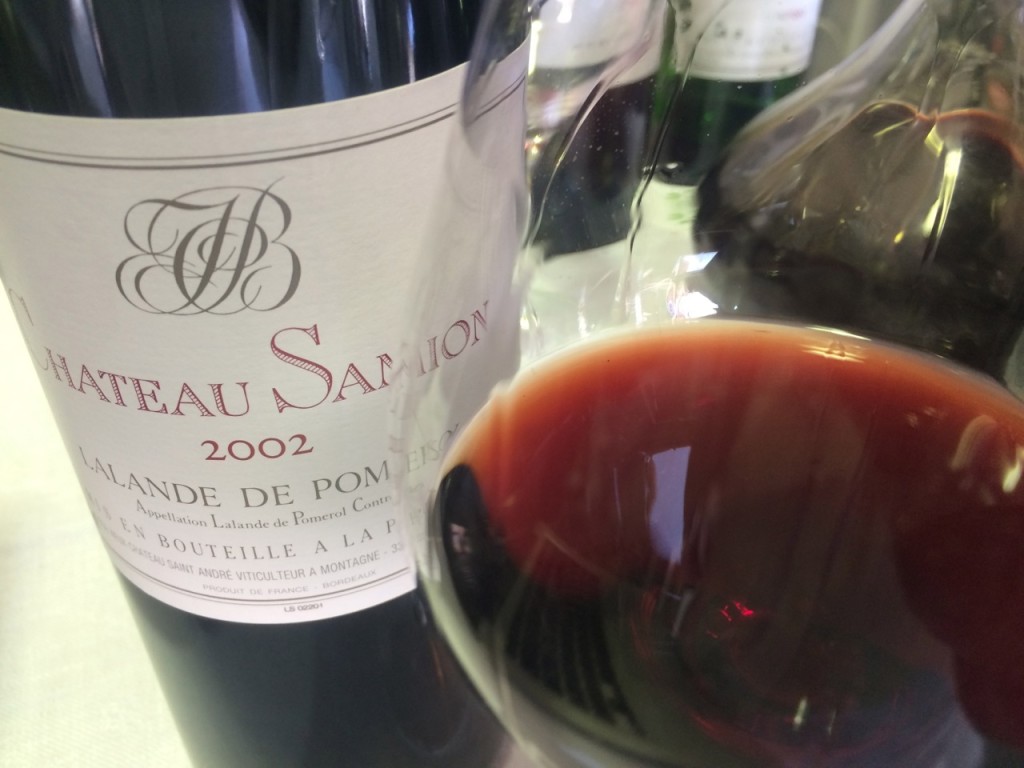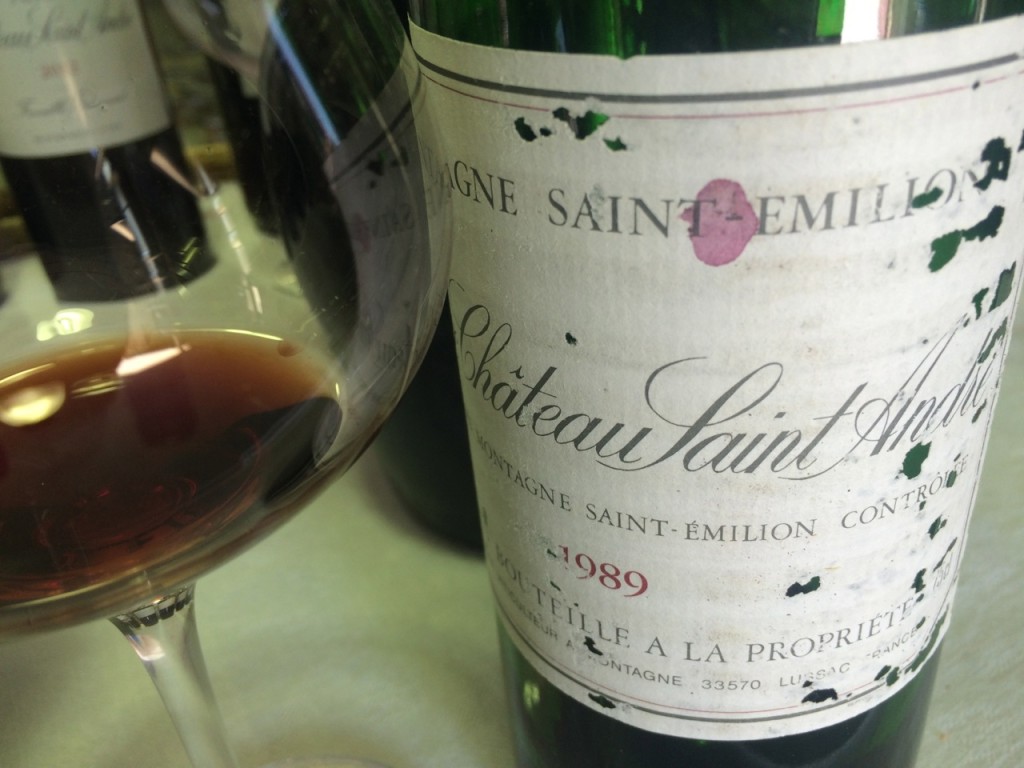Bordeaux: more than just big names
Joy in Montagne and Lalande de Pomerol with Jeff Berrouet
By Panos Kakaviatos for wine-chronicles.com
21 October 2015
Jean-Claude Berrouet, long time director of Petrus, bought Vieux Château Saint André in the somewhat obscure appellation of Montagne Saint Emilion back in 1978.
Why Montagne?
He had a double activity: vinifying wines for negociant Jean Pierre Moueix but also purchasing grapes from various terroirs. At that time, the company sold lots of bulk wines (en vrac in French) and Jean-Claude got to know many of the vineyards.
“My father sensed the quality of the vines,” remarked Jeff, his son, “so he bought the 11 hectares in Montagne.”
It was great to spend some time with Jeff who manages both Vieux Château Saint André in Montagne Saint Emilion and Château Samion in Lalande de Pomerol, which his father also had purchased.
“About 15 years ago, no one talked about Lalande de Pomerol, but that is changing,” Jeff said. “I see that more and more neighbors are interested when properties are on sale around here.”
Both wines constitute bargains for Bordeaux wine lovers.
Especially for wine lovers who seek freshness and elegance in their wines. Like his father – and brother Olivier who now manages Petrus – Jeff makes wine that are rich yet vivacious, and never black with loads of oak treatment, which one sees too often on the Right Bank. Furthermore, Jeff says that “we have to stay affordable, as this appellation cannot be sold for 40 euros a bottle”.
He said that some companies have “come in, putting in lots of money and then realize that they could not sell them [wines from these lesser known appellations] for 40 euros a bottle.” I am not sure which ones he meant, and it does not matter to me as I am a buyer of both Vieux Château Saint André and Samion for both their respective qualities and competitive pricing.
Wines in bold I liked in particular, when red and bold even more – and when underlined, wine nirvana.
- 2012 Château Samion Lalande de Pomerol – France, Bordeaux, Libournais, Lalande de Pomerol
Tasted with owner Jeff Berrouet after Vinexpo. About 13.5% alcohol. We spoke of the vintage, which had a nice spring, but the summer got a bit rainy and cold. A good Indian Summer helped. Just 1.5 hectares of vines, 100% Merlot. It is in what he called the “second zone of the appellation” with gravely terrain over clay. Lalande de Pomerol comes in two parts: Neac and Lalande separated by the national highway. Neac is more clay like. “Because we had a nice Indian summer, we were able to wait a bit for the harvest, but we prefer not to wait too long,” Jeff explained. “We like to have Merlot to express its aromatics. We had about five days to harvest the Merlot for its best period. We taste the grapes once a day. End of September. Others picked later. But because of gravely soils, surface gets hotter. In any case, the grapes of Vieux Chateau Saint Andre are picked later – colder clay over limestone. We prefer to be stricter with pruning.” How did this wine taste? Ripe plum, rich and opulent and fresh too. Lots of palate presence. This costs ex chateau about 15 euros. No malolactic in barrel. A recent investment in more sorting tables. “Before we just asked the harvesters to throw out bad bits before the grapes went to the transport,” he said. But a vibrating sorting table since 2009. Delicious and sap filled. Jeff continues: “I am always thinking of price quality ratios. I do not want to get expensive. Petrus we only make at Petrus.” The blend is decided rather early. After the malolactic, 12-14 months in barrel. Only French oak. About 20% new oak. Soutirage (racking) – depends on the vintage. Sometimes once, sometimes three times. “The worst error is to have a recipe to make wine.” A frank success and an excellent price, I say! (91 pts.)
- 2010 Château Samion Lalande de Pomerol – France, Bordeaux, Libournais, Lalande de Pomerol
14.5% in alcohol, yes 2010 vintage folks. The 2009 had less alcohol, actually. Jeff thinks that the 2009s have more balance than the 2010. I could feel a bit of the heat. The nose is quite mineral like, licorice, with black fruit. Yet a touch of warmth on the palate, as the alcohol can be felt. The palate is quite rich and it is not bad but I may just prefer the 2012, tasted just before. Jeff and I then talked a bit about the winemaking at Samion. For 2010, he used added yeasts to ensure against piqure lactique (lactic spoilage). No pre-maceration. Why? It increases the risk of contamination, especially with high sugar vintages like 2010, Jeff explained. And cold pre-maceration “does not really do much” he added. Aeration is OK. Then pumping over, classic. Aeration at the beginning of fermentation to give yeasts some air, but then it is closed at the bottom – the top part is protected against oxygen anyway, as it is Co2. Some studies show that sometimes in the middle of fermentation, the indigenous yeast is actually working. But adding yeasts, allows for competition among yeasts. Also Jeff does not like stirring of the lees as that could risk development of brett. Racking is not for nothing – that cleans out the barrels. So why risk the stirring of lees in barrel, he asked rhetorically. (88 pts.)
- 2002 Château Samion Lalande de Pomerol – France, Bordeaux, Libournais, Lalande de Pomerol
Lovely nose of dry fruit. Red cherry, too. A bit of beef blood. Faded rose petals. This was Jeff’s first vintage and bravo for that! Nice juiciness on the milieu de bouche. Very fine, even elegant. A bit tight on the finish, and a bit short – hey, this is 2002 – but really tasty! (90 pts.)
- 2012 Vieux Château Saint André – France, Bordeaux, Libournais, Montagne-St. Émilion
Here the Berrouets have more vines, 11 hectares, at 90% Merlot and 10% Cabernet Franc. 13.5% alcohol. The vineyard is getting older, with average age of vines at 40 years. “We will start replanting soon,” Jeff said. OK, this wine was not as sumptuous as the Lalande de Pomerol in the same vintage, which I preferred. A certain toughness to it by comparison, but with pleasing fresh red fruit aspects. Vines planted on soils of heavy clays, most facing south. Some zones have more limestone than others, Jeff explained. We have a few parcels on the mother rock. “What I like in the Montagne, we have more finesse,” he said, comparing it to a tight string. (87 pts.)
- 2006 Vieux Château Saint André – France, Bordeaux, Libournais, Montagne-St. Émilion
Noticeably darker in color, when compared to the 2012, but not amber like the 2002. Potpourri au nez. The palate is juicy and fairly open in a medium bodied sort of way. A bit of chewy tannins. Finish is medium. 13% alcohol. (88 pts.)
- 1989 Vieux Château Saint André – France, Bordeaux, Libournais, Montagne-St. Émilion
A very solar vintage. 13.5% alcohol. Jeff’s father, Jean-Claude, noticed a change in climate from 1989. “We would pick grapes ripe as well as the pips being ripe in the 80s,” Jeff explained. “But starting with the beginning of the 90s, we noticed that the sun was getting stronger, and that the grapes were getting more easily grilled, with pips not being as ripe as before – or at least not in coordination with the entire grape.” 1989 comes across as rather fresh for a hot vintage. It was bright and delicious, exuding much depth and length on the finish. My favorite wine of the tasting! As for methods today, Jeff said: “I do very little leaf clearing” and when he does it, he does it late, from 15 August. Or perhaps in September. And always on the side of the sun rising. There is a sanitary effect of leaf clearing that permits aeration: “So for example, in 2002, we leaf cleared to get rid of humidity around the grapes and buffer the rainy aspect of the vintage. Also, we did not work the soils either, so that rain did not enter the soil too much and run risk of bloating the grapes.” (92 pts.)
That same evening, I had dinner with friend and wine author Suzanne Mustacich, who has written a deservedly publicized book on Bordeaux and China, Thirsty Dragon, which I have not yet read, but will do so. By all accounts it is a great read and – knowing Suzanne – filled with interesting perspectives, scoops and information! But back to the wine by the Berrouets.
We met for dinner at the Saint Emilion bistro called Envers du Decor, where the food is reliably delicious. And we ordered a 2005 Vieux Château Saint André which was by all accounts excellent: still youthfully tannic at 10 years of age, robust but with plenty of sap and substance. Just writing from memory, but I recall thoroughly enjoying it with a steak…
If you ever plan to visit Lalande de Pomerol or Montagne Saint Emilion, be sure to call Jeff and organize a visit to and tasting at the properties. Vieux Château St André / Tel +33 (0)5 57 74 59 80
 Wine Chronicles
Wine Chronicles



Share This